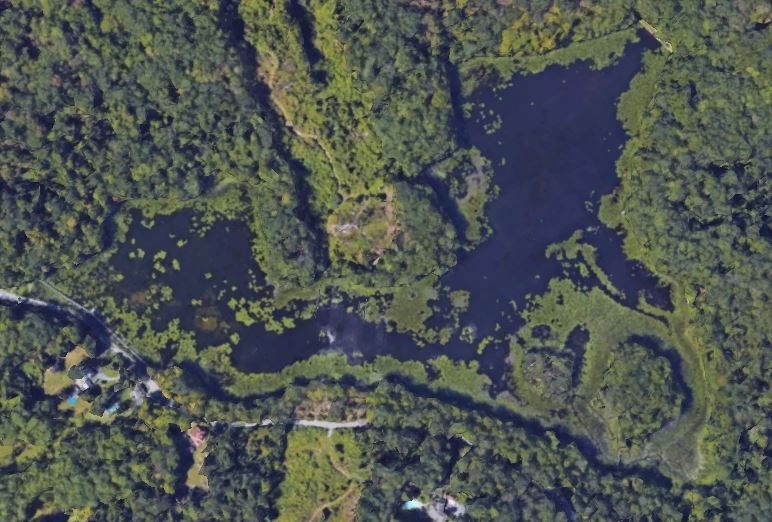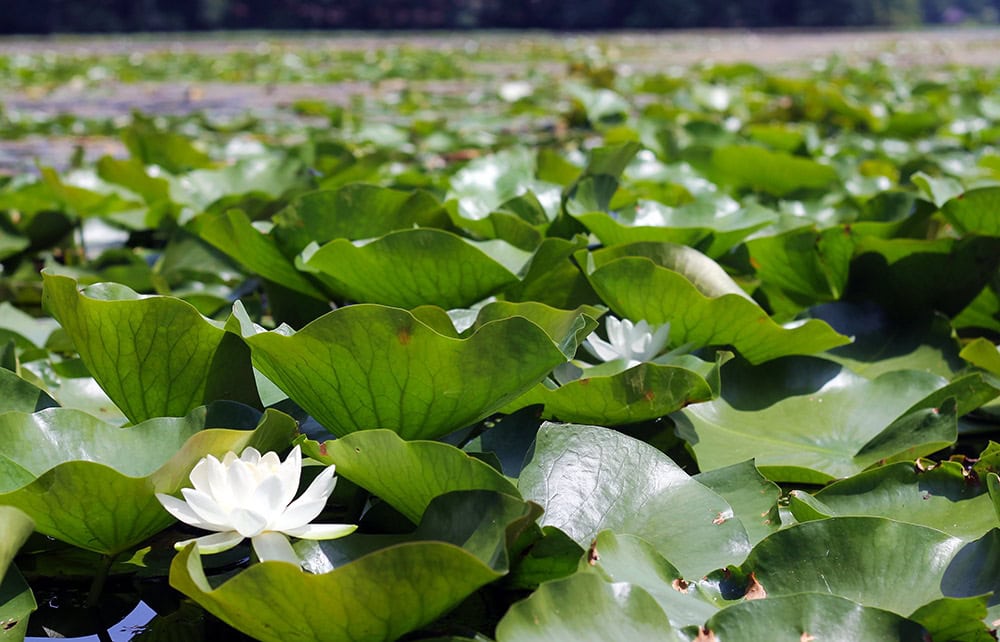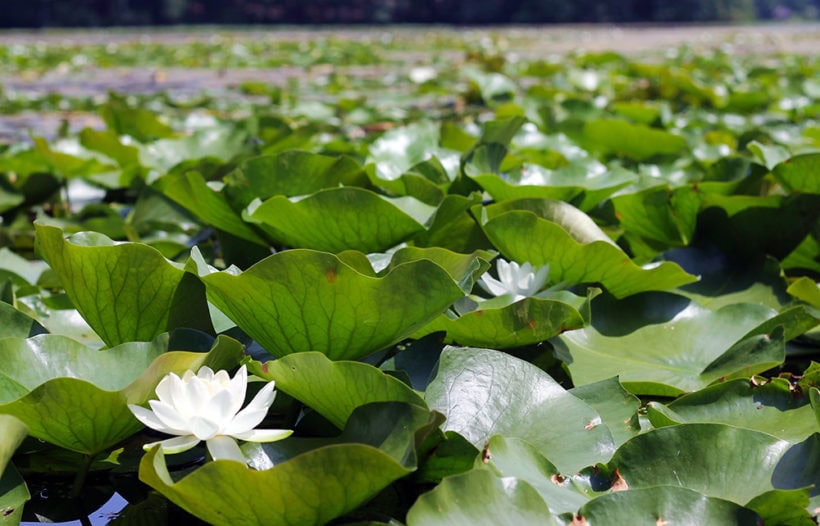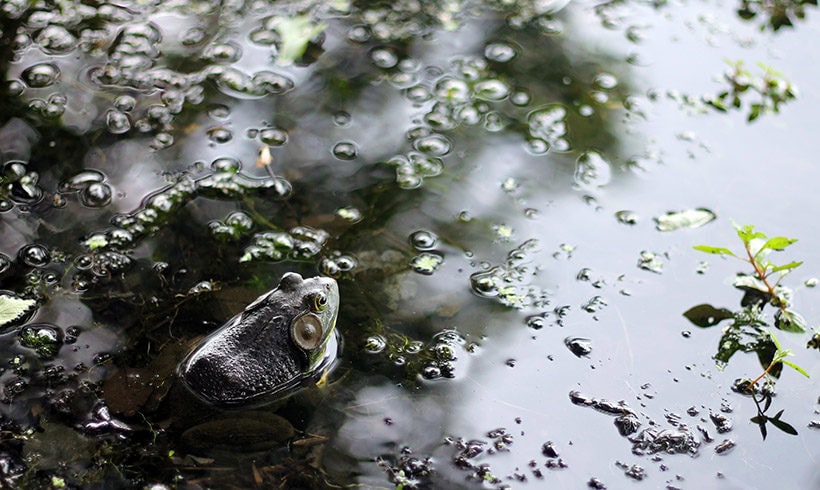What do lily pads tell us about Teatown Lake?

The lily pads on Teatown Lake are hard to miss. As you can see in the aerial image above, water lilies take up approximately 1/3 of the surface area of the lake. Depending on who you ask, they are either blight or beautiful.
The lake’s ecosystem
There are two species of water lilies that inhabit Teatown Lake: White water lilies and yellow pond lilies, both of which are native to our region. Water lilies are rooted in the soil at the bottom of the lake, with their leaves and iconic flowers visible on the surface. Their abundance provides important benefits to the ecosystem. They create food and shelter for both aquatic and non-aquatic wildlife. Lily pads provide important food sources for beaver, certain species of beetles, and pollinators as well as providing shelter for fish.
In addition to these ecological benefits, the presence of water lilies tells us something important about the future of Teatown Lake.
The future of Teatown Lake

Water lilies grow in about 4 feet of water or less, which is why in the aerial photo you will observe them hugging the edges of the lake where it is shallowest. Their presence is one of a few indicators that Teatown Lake is filling in.
The lake’s filling in is caused by a natural process called eutrophication. Eutrophication is the process by which a body of water becomes over-enriched with nutrients, spurring plant growth and eventually filling in the body of water with organic matter. In other words: if we take no action, one day the lake will turn into a marsh/wetland. (Note: there are other aquatic plant species that contribute to eutrophication, most are native, some not.)
Teatown Lake is a man-made lake, originally created when Gerard Swope Sr. dammed Bailey Brook in the 1920’s. The lake was created by humans, and will only “permanently” continue to exist as long as humans intervene. There are both “in-lake” and “out-of-lake” strategies that we could use to prevent or otherwise slow the filling-in of the lake. “In-lake” strategies refer to the actions we could take directly in the lake, while “out-of-lake” strategies refer to managing our watershed, something that we would need the cooperation of our community to do.
Caring for our watershed
Whether you know it or not, you live in a watershed! All water that originates from your property through storm runoff, septic systems, etc. eventually makes its way to a body of water. You are in that body of water’s watershed. For example,if your water runoff eventually makes it to Teatown Lake, then you live in the Teatown Lake watershed!
While eutrophication is a natural process which most lakes undergo, it is accelerated by human activity. You can care for your watershed in a few different ways. Making sure that your septic tank is working properly, reducing/eliminating the use of lawn fertilizers, and reducing stormwater runoff are just a few ways that you can make a big impact on your own watershed.
Interested in learning more about Teatown Lake? Join us for our upcoming program: Life in Teatown Lake.
SUMMER SATURDAY ADVENTURES: LIFE IN TEATOWN LAKE
August 12 @ 10:00 am – 11:30 am
Summertime is a great time for exploration and discovery at Teatown. We’ll start with a story and end with an activity, with plenty of time for discovery in between.



